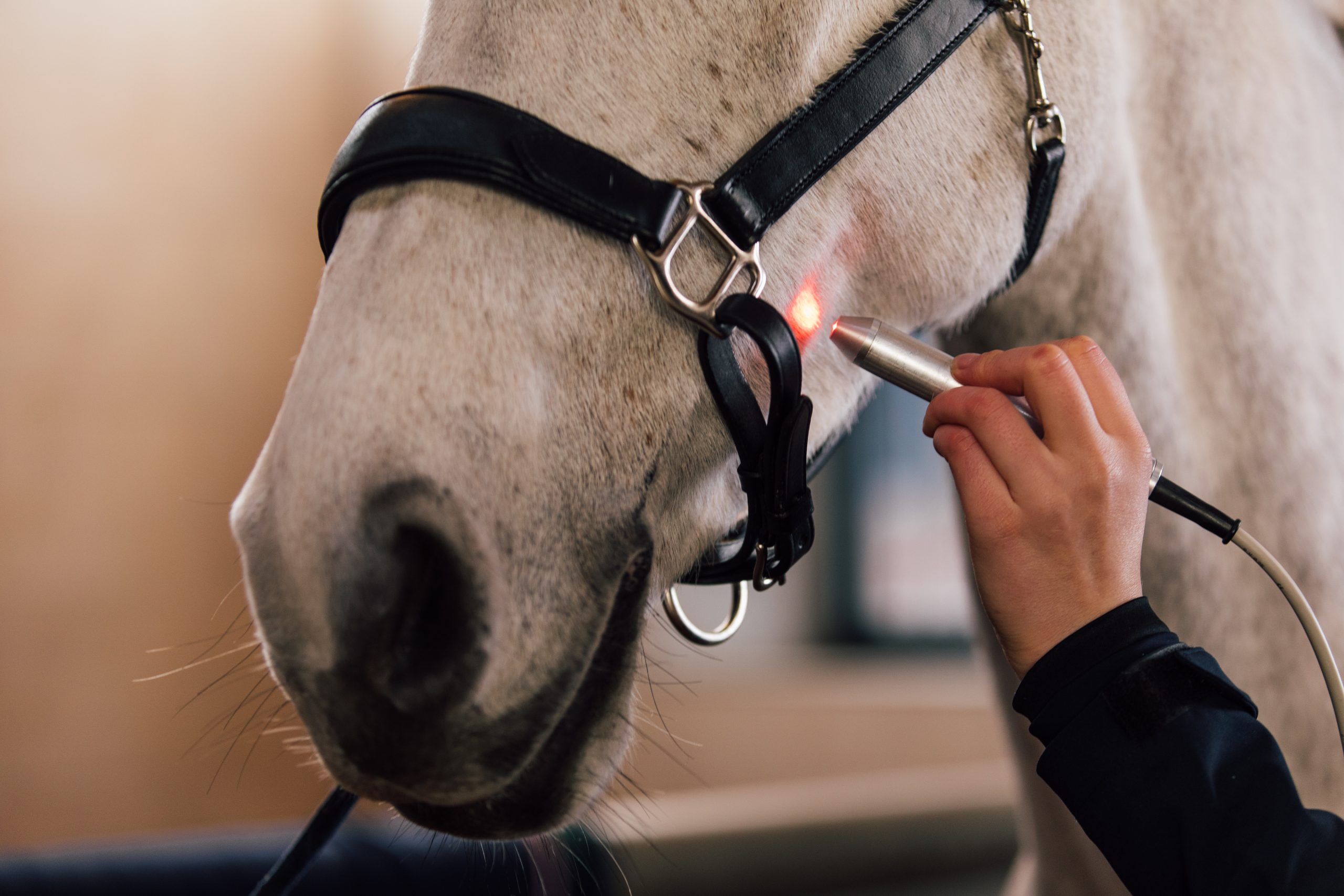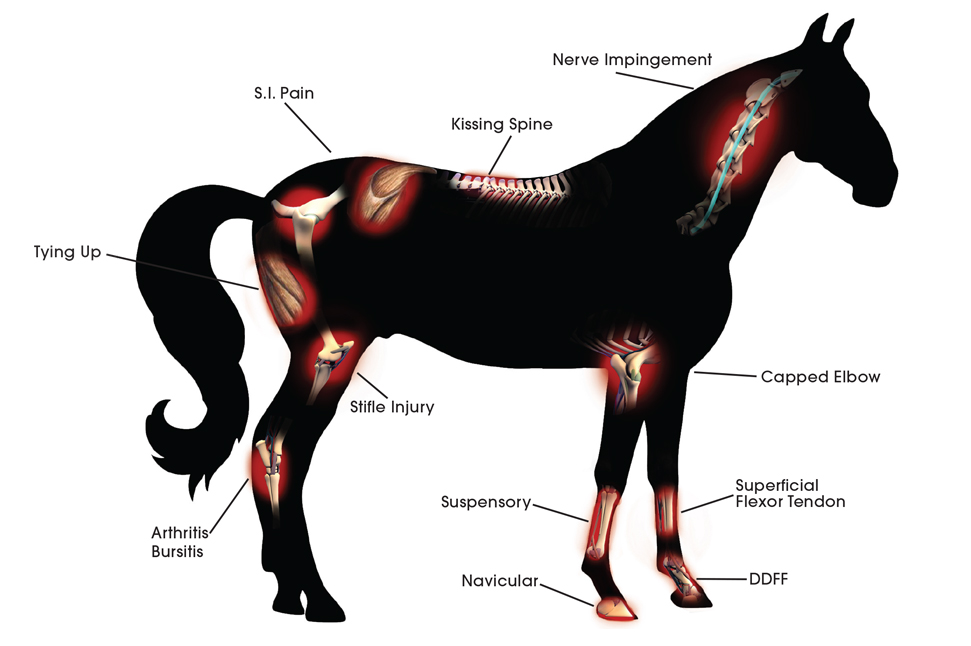Laser Treatment in Equine Treatment: A Modern Strategy to Improving Equine Health
Laser therapy has actually arised as an essential method in equine therapy, making use of focused light energy to foster mobile repair service and speed up recuperation from a range of disorders. This non-invasive technique is particularly reliable in managing bone and joint injuries, wounds, and inflammatory problems, considerably boosting overall steed health and wellness. By boosting mitochondrial activity and enhancing ATP production, laser treatment not just enhances blood circulation but additionally offers significant pain relief. As this cutting-edge treatment remains to obtain traction, it opens up intriguing opportunities for addressing chronic problems like joint inflammation and hoof issues, signifying a transformative shift in veterinary treatment. What makes this method particularly engaging?
Recognizing Laser Treatment
Laser therapy, a non-invasive treatment modality, has acquired considerable traction in equine medicine because of its efficacy in promoting healing and pain relief. This advanced therapeutic method utilizes focused light power to pass through cells, cultivating mobile fixing and regrowth. The underlying device includes the excitement of cellular mitochondria, causing raised manufacturing of adenosine triphosphate (ATP), the power currency of cells. Enhanced ATP levels quicken cells repair service processes and minimize swelling, making laser therapy particularly effective for dealing with bone and joint injuries, injuries, and other inflammatory conditions in horses.
There are numerous sorts of lasers used in equine treatment, each with certain wavelengths and power outputs customized to different healing requirements. Low-level laser therapy (LLLT), additionally known as chilly laser treatment, utilizes reduced power levels to promote cell feature without causing thermal damages. High-intensity laser therapy (HANDLE), in contrast, makes use of higher power degrees to accomplish deeper cells penetration and even more significant healing effects.
Veterinarians use various laser gadgets and methods relying on the problem being dealt with and the desired deepness of cells penetration. Appropriate training and experience are important for making sure the safe and reliable application of laser therapy, consequently optimizing its therapeutic capacity while minimizing dangers.
Benefits for Equine Wellness
With a solid understanding of how laser therapy works, it is essential to explore its numerous advantages for equine wellness. By boosting cellular function, laser treatment advertises faster wound healing and help in the regrowth of damaged cells.
Moreover, laser treatment has been shown to enhance flow, thus improving blood circulation to influenced areas. Enhanced blood circulation makes certain that necessary nutrients and oxygen are provided much more efficiently, facilitating the recovery process. In addition, laser treatment's anti-inflammatory effects aid in minimizing swelling and pain, which is important for the general wellness of the horse.
Pain monitoring is an additional considerable benefit. By launching endorphins and blocking discomfort signals, laser therapy gives efficient, non-invasive remedy for both severe and chronic pain. This can add to boosted wheelchair and lifestyle for the pet.
Lastly, laser treatment is a non-invasive treatment choice, minimizing the danger of issues associated with even more invasive procedures. Its flexibility and efficiency make it a very useful tool in modern-day equine veterinary medication.
Common Conditions Dealt With

One more prevalent condition treated with laser treatment is joint inflammation. Furthermore, laser therapy is used in the monitoring of injuries.
Equine respiratory problems, such as recurrent respiratory tract blockage (RAO), likewise respond favorably to laser therapy. The anti-inflammatory buildings of the therapy aid in decreasing airway swelling, therefore improving respiratory system feature. In addition, laser treatment is helpful Going Here in treating unguis issues, including laminitis and abscesses. By boosting circulation and reducing pain, site it supports quicker healing.
Treatment and Security
Applying laser therapy in equine therapy involves a careful procedure to make sure both efficiency and safety. Equine Therapy. The procedure starts with a detailed veterinary evaluation to determine the suitability of laser therapy for the steed's specific problem. As soon as considered proper, the treatment area is prepared by cleaning and, if needed, clipping the hair to enhance laser penetration
The professional must choose the appropriate kind of laser, normally a low-level laser (LLLT) or a high-power laser (HPL), depending on the condition being dealt with. The laser tool is after that calibrated to the see this page suitable wavelength, power, and period setups. Throughout the application, the practitioner moves the laser over the targeted area in an organized manner, making sure regular and even direct exposure.
Safety protocols are strictly stuck to, consisting of making use of protective eyeglasses for both the professional and the steed. In addition, it is critical to keep an eye on the steed for any kind of indicators of pain or damaging reactions throughout the procedure. Post-treatment, the equine is commonly offered a duration of remainder to enable the restorative impacts to materialize.

Future of Equine Laser Therapy
As advancements in vet medication proceed to unfold, the future of equine laser therapy holds substantial pledge. Emerging technologies and much deeper clinical insights are readied to improve and increase the applications of laser therapy for horses. Among the most anticipated developments is the integration of innovative imaging methods that permit more specific targeting of afflicted tissues, therefore improving therapeutic results. Additionally, the growth of portable and user-friendly laser tools is likely to make this therapy a lot more available to a more comprehensive variety of practitioners and equine owners.
In addition, ongoing study into the molecular and mobile devices of laser therapy will likely produce optimized procedures customized to specific problems, boosting effectiveness and lowering treatment times. Customized treatment strategies based on hereditary and biochemical markers could end up being a truth, ensuring that each equine obtains the most proper and reliable care.
Additionally, governing developments and standardization of procedures will certainly boost the integrity and integrity of laser treatment in equine technique. Equine Therapy. As these innovations continue to emerge, equine laser treatment is positioned to come to be an essential element of vet treatment, offering boosted healing and enhanced high quality of life for steeds around the world
Conclusion
